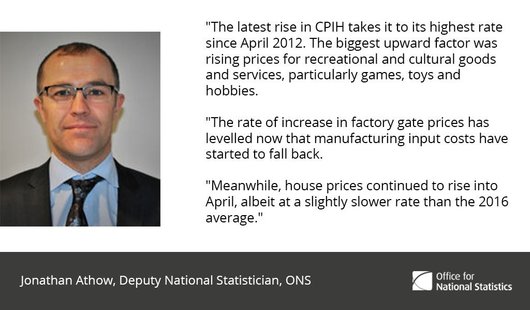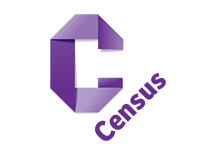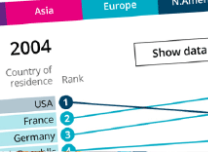Economy Index of private housing rental prices (IPHRP) in Great Britain: May 2017 Private rental prices paid by tenants in Great Britain rose by 1.8% in the 12 months to May 2017; this is unchanged from April 2017. In England, private rental prices grew by 1.9%, Wales saw growth of 0.9% while Scotland saw rental prices decrease (negative 0.1%) in the 12 months to May 2017. UK producer price inflation: May 2017
The rate of increase in factory gate prices appears to be stabilising now that manufacturing input costs have largely fallen month-on-month since January.
The annual rate of factory gate price inflation (output prices) remained at 3.6% for the third consecutive month and slowed on the month to 0.1%, from 0.4% in March and April. Understanding the different approaches of measuring owner occupiers housing costs: Jan to Mar 2017
Owner occupiers' housing costs (OOH) in the UK under the rental equivalence approach have grown by 2.5% in Quarter 1 (Jan to Mar) 2017.
OOH according to the net acquisition approach have grown by 2.1% in Quarter 1 2017. UK consumer price inflation: May 2017
The Consumer Prices Index including owner occupiers' housing costs (CPIH, not a National Statistic) 12-month inflation rate was 2.7% in May 2017, up from 2.6% in April.
The rate has been steadily increasing following a period of relatively low inflation in 2015 and is at its highest since April 2012.
Rising prices for recreational and cultural goods and services (particularly games, toys and hobbies) was the main contributor to the increase in the rate. UK house price index: Apr 2017 Average house prices in the UK have increased by 5.6% in the year to April 2017 (up from 4.5% in the year to March 2017). While up against March 2017, there has been a general slowdown in the annual growth rate since mid-2016. The average UK house price was £220,000 in April 2017. This is £12,000 higher than in April 2016 and £3,000 higher than last month. Prices economic commentary: June 2017
The supply chains for a range of products manufactured in the UK, including motor vehicles, became more import-intensive between 2010 and 2013 – leading to input prices more closely reflecting movements in the sterling effective exchange rate for these products compared with less import-intensive products.
Falls in property transaction volumes in London in particular are feeding through into lower average house price growth. Commenting on today's inflation figures, ONS Deputy National Statistician Jonathan Athow said:  People, population and community Deaths registered in England and Wales, provisional: week ending 2 June 2017
The provisional number of deaths registered in England and Wales in the week ending 2 June 2017 (week 22) was 8,332; this represents a decrease of 1,708 deaths registered in comparison with the previous week (week 21).
The average number of deaths for the corresponding week over the previous 5 years was 8,417.
The decrease in the deaths registered in the week ending 2 June 2017 is likely to be due to the closure of register offices over the spring bank holiday. This pattern is similar to previous years. All about image The latest blogpost from the ONS Digital team talks about the use of images at ONS. | 











No comments:
Post a Comment